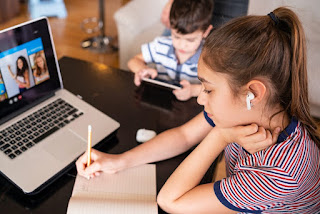A New Way of Learning
As one who actively works in education, it is always interesting to observe the way teachers at different grade levels teach. With recovering from teaching in Pandemic, many teachers are trying different teaching strategies to help engage students and take a step above passive learning. What is passive learning? Passive learning is when students are responsible for taking in information. This can be completed through lectures or assigned readings. For many students, this concept of passive learning may not work for them because they have a challenging time sitting still or just cannot absorb information in this way.
What is Active Learning?
Let us welcome active learning into the classroom. What is active learning? Active learning involves the student in learning by engaging them through different activities and discussions. The focus is on students leading the learning and not the teacher just lecturing facts through a lecture. The teacher can stand by to facilitate, but the student is the one who drives it. As active learning occurs, teachers can help other students where needed.
Example of Active Learning
In one example of active learning, a 4th grade teacher had a discussion and poll of what type of learners her students were. She engaged the students right from the start by having the students vote with post it notes on a chart. Visual learners were the popular response, and she created a lesson that did just that.
Here is a JamBoard I created about the example:
 |
| Image Source: Created by Author |
The teacher's lesson was about the school's code of conduct. She had a sign displayed in her classroom, but she wanted to take it a step further by having the students demonstrate how to visually represent it. I enjoyed reading about this lesson because it helped students understand the importance of the code and that it is important to obey the rules in the school.
The teacher did an excellent job with presenting this lesson. She took her knowledge of them as visual learners and let them take the lead in a student discussion on the SmartBoard. Students led the discussion and small group work allowed students to collaborate ideas and then integrate the use of technology (PicCollage on iPads in the the classroom) to create an artifact. The students had a visual demonstration of how to use PicCollage and some already had knowledge, but otherwise the majority of the lesson was student driven which makes it active learning.
My Thoughts
Active learning should be considered when instructing students. The importance of getting to know how the students learn will help them thrive in the classroom. Students also seem to do better when they can move around and lead. Students as I observe in the classroom, need a mix of learning to keep them engaged. The only issue I find are those that have resistance in participating because they find something intimidating, hard, or just do not want to do it. How do you motivate a student who does not want to do it? You cannot make a student do something, but as a teacher you can encourage them. This is what I deal with in Special Education. How do you motivate a student when they do not know the basics and you have others in the small group that are not on the same level of learning? Active learning works for those that are visual, but resistance can prevent others from wanting to do the suggested activity. For Special Education, I need to build relationships by getting to know individuals before I see what will work for them. If active learning is mixed in, it must be done at a level where they can understand to achieve success.
 |
| Image Source: www.ldrfa.org |

Active learning can be applied to all types of learning and is not just for visual learners. Teaching students to take ownership of their learning is definitely difficult and is a process. Hopefully you can find some elements of it that you can use with your learners.
ReplyDelete